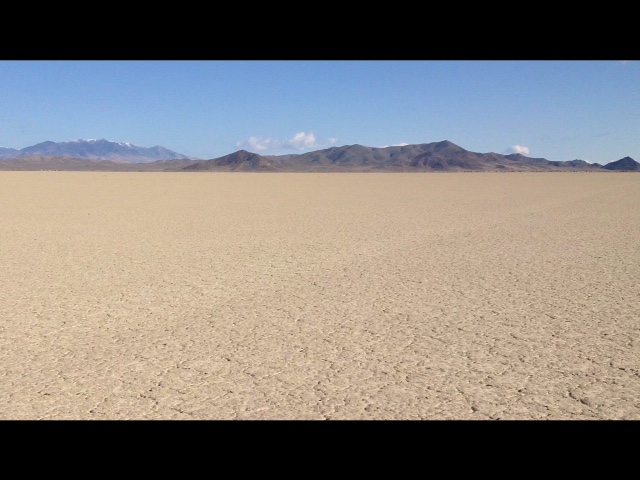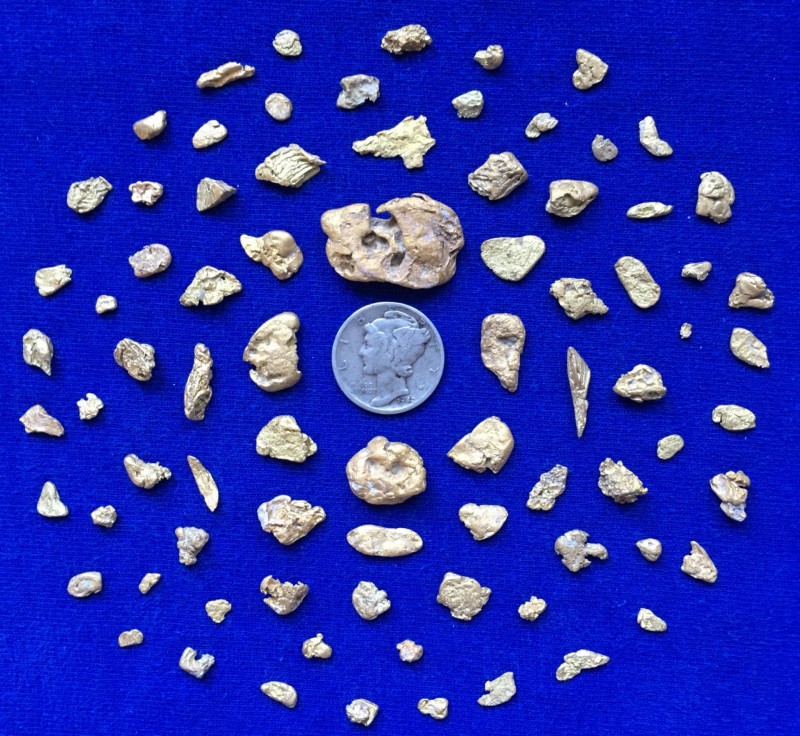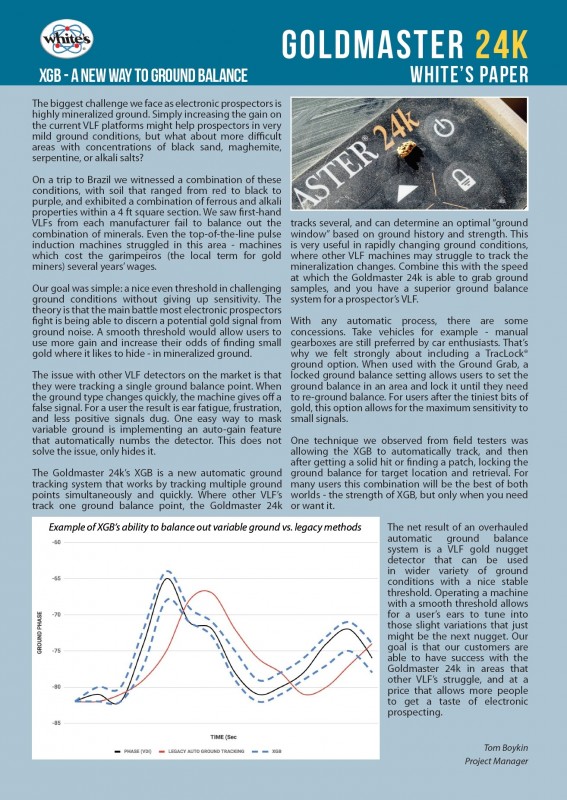-
Posts
1,186 -
Joined
-
Last visited
Content Type
Forums
Detector Prospector Home
Detector Database
Downloads
Everything posted by Lunk
-
Kiwi is right; if you really want to squeeze every nugget out of an area, it’s best to also come back at it 45 degrees. Althogh it’s usually not much, I do find more gold by cross gridding. Andyy, I’m glad you were able to find more nuggets with my unconventional settings...sometimes it pays to experiment.
-
It took me awhile to be able to overcome the impulse to wander, but I’ve learned that gridding these old patches is guaranteed gold. They’re typically small bits, but once in a while the law of averages kicks out a bigger lump.
-
Depending on the terrain, my grid areas are typically squares with sides around 30' to 40' in length. Using line-of-sight, I simply detect between two bright orange soccer cones placed on opposite sides of the square, moving them along the sides until the entire square has been covered. The process is then repeated at 90 degrees.
-
Just the 14" coil this time, Mitchel.
-
Indeed Simon, but I use a secret weapon in flogged areas: slow and careful gridding; most operators can’t even stand to do it for a half an hour, let alone all day for days on end. But in these kinds of areas, it’s the most effective way to maximize your gold recovery.
-
Tis the season for nuggetshooting the great American desert southwest once again, and for the first leg of my annual pilgrimage it’s always mandatory to spend some time at the Rye Patch area in northern Nevada. With the ground being very dry this time of year, the GPZ 7000 performs at its best in this region with minimal interference from the conductive alkali component of the local ground. In areas where there was variable ground however, a quick adjustment of the Ground Smoothing from Off to Locate Patch returned the threshold to a smooth and stable operation again. One of the highlights of the hunt was a decent, broad target that had a hint of a gurgle as the coil was swept completely out of the target zone, which indicated the nugget was going to be a bit larger than the usual dinks I had been finding. After removing 8 to 10 inches of material out of a broad area centered over the target, the signal response was fairly screaming as I swung the coil flat against the bottom of the excavation. Turning the coil up on edge however, and the Zed struggled to get a response from the bottom of the hole; when this scenario happens, it’s telling me there’s a really nice nugget and that I have a lot more digging to do. ? Finally, at a depth of 18 inches, the target was screaming off the edge of the coil, so just using the plastic scoop, I dug into the floor of the mammoth dig hole and retrieved the golden beauty: a lovely 10.6 grammer!? This same process was repeated on another occasion, but this time it was a 4.5 gram nugget about 3 inches away from another nugget about half its size, again at around 18 inches deep. Although pretty nippy in the mornings, the sunny weather held out with no wind. So all in all, a super good hunt, with a total of 51 grams of golden goodies.
-
Good job sticking with that target until the end and not giving up on it like the first guy. A very good lady nuggetshooter by the name of Lucile Bowen once told me that persistence pays, and that if a signal persists, keep digging until you find out what it is.
-
Will do.
-
Thanks Buzzard, your test result is what I would expect from ordinary chondrites, since they're composed of iron silicates and elemental iron alloyed with a small percentage of nickel. I should be able to field hunt with my 24k at the Yucca DCA (Franconia) soon. Can't wait to see how well the XGB handles the super-hot variable ground on the north half of the strewn field.
-
WTG Fred, it's just like riding a bicycle!
-
It was a great day. The reason I didn't mark the plate with my shovel is that I didn't use my shovel; the detector signal appeared to indicate a shallow dime, so I was using my boot to remove the loose soil. The plate was situated on edge instead of laying flat, so I grabbed ahold of it and pulled it up out of the ground and it came up clean, just as it appears in the photos.
-
Good job on your first season!
-
Nice haul Paul!
-

Gold Monster 1000 Vs Whites Gmt24k
Lunk replied to Sourdough Moe's topic in Metal Detector Advice & Comparisons
Now that you mention it, Steve, that is an asumption on my part, so I’m interested too. -

Gold Monster 1000 Vs Whites Gmt24k
Lunk replied to Sourdough Moe's topic in Metal Detector Advice & Comparisons
You hit the nail on the head, Bryan: some folks prefer automatic operation while others like to fiddle with settings. -

Gold Monster 1000 Vs Whites Gmt24k
Lunk replied to Sourdough Moe's topic in Metal Detector Advice & Comparisons
I’m thinking the 24k has a slight edge over the EQX 800 between the XGB and concentric coil. -

Gold Monster 1000 Vs Whites Gmt24k
Lunk replied to Sourdough Moe's topic in Metal Detector Advice & Comparisons
The XGB auto tracking works great, and unlike the GM1000, it tracks several ground balance points simultaneously, providing more accurate tracking in variable ground. -

Gold Monster 1000 Vs Whites Gmt24k
Lunk replied to Sourdough Moe's topic in Metal Detector Advice & Comparisons
I've had my 24k for awhile now, and just sold my GM1000. They are both extremely sensitive, but I like the 24k because it has more onboard tools to customize the detectors performance in different situations. And the 6" concentric coil does shoot a little deeper than a double-D coil of the same size. -
Ace! Sweet little patch...hopefully there's a nice lump nearby.
-
Super speci, WTG!
-

Steve's 2018 UK Adventure
Lunk replied to Steve Herschbach's topic in Metal Detecting For Coins & Relics
Steve, thanks for relating your epic adventure; your finds are simply incredible! -

GM1000 Vs Equinox Vs White’s 24k
Lunk replied to Boogness's topic in Metal Detector Advice & Comparisons
According to the paper White’s put out on XGB, it does bring something different. The gist of it is that XGB is a real weapon in highly variable ground types. Click for larger version:- 21 replies
-
- minelab gold monster
- minelab equinox
-
(and 1 more)
Tagged with:
-
One method that works in trashy areas is to only dig the mellow, deeper sounding targets, as most of the trash is relatively shallow.
-
Nice gold Rick!



